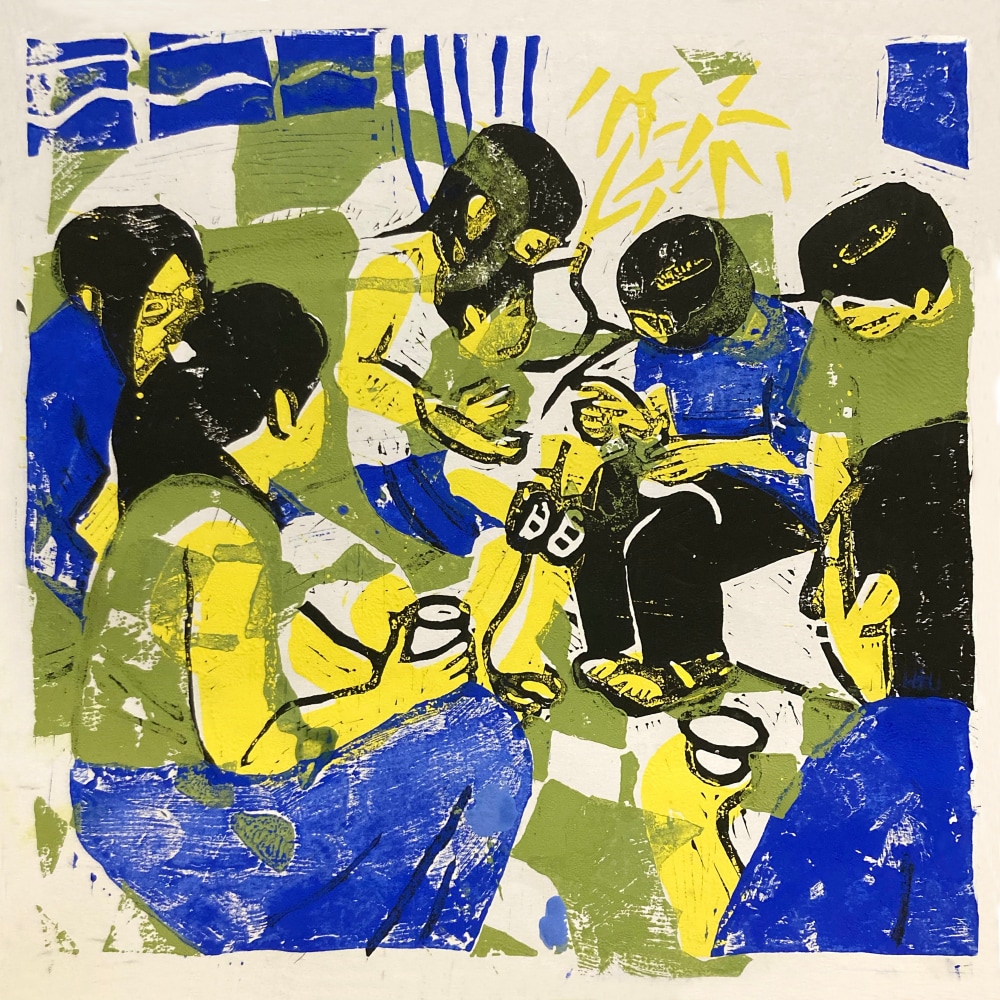
BOLOHO collective is a Cantonese romanization of the Chinese word for “jackfruit core,” the collective was initiated by BUBU (LIU Jiawen) and CAT (HUANG Wanshan) in 2019, with ZHU Jianlin, LI Zhiyong, and FONG Waiking joining later as full members. In the beginning, BOLOHO was more like a business venture between BUBU and CAT, two family women working away from home, and a place to get some fresh air where they could sort out their lives and work. After more than three years, the project has gradually developed into a "company" platform based on the principles of self-discipline, equality, and mutual aid, providing work for collaborators as well as friends who cannot make a living from art alone. BOLOHO also allows them to better understand how to live and work communally when taking jobs together and provides the opportunity to think about, discern and solve some of the real issues that we are all faced with.
About the works:
Nobody But Here is the latest project from the Guangzhou-based collective, BOLOHO. This environmental piece, handmade rubber floor mats, occupies the entire 'market' section of the exhibition, its inspiration drawn from the utilitarian anti-skid mats found in fish markets globally.
Its pattern, however, tells a more intricate story, one that is tied to the personal history of Cat’s grandfather. (Cat is one of the members of BOLOHO.) Born in Malay, her grandfather journeyed back to southern China in the 1950s, where he found himself toiling on a collective rubber tree farm. His family regarded him as the messenger, their conduit to information about the Republic of China. Unknown to him was the strategic significance of the hot land to which he dedicated his life, its resources instrumental in the mounting tension of national confrontation. After the loss of communication, he and his Malay relatives never reunited, their lives playing out amidst the vast ocean, dense forests, strands, tidelands, coconut groves and rubber plantations of the South. Their identities and occupations, continuously rewritten and reconstructed by the nation, the state, and the system, bore the mark of fluctuating circumstances. The collective memory of different generations, despite its overlap and displacement, persists. Though the bodies and memories remain silent, the spaces from which these memories stem continue to remember in their unique way.
BOLOHO, through a collective painting practice, endeavors to traverse these memory gaps, patching up its fractured spaces, and weaving together the disparate threads in the process of re-creation. This rubber floor mat piece, bearing patterns and materials typically found in public places as anti-slip measures, serves as a gateway to the history of rubber plantation workers in southern China post-1949. It is a poignant revisitation of the collective memories of the Chinese ancestors.